After my Bett day 1 post (read more here) I was intending to post at the conclusion of day 2 however having travelled home, feeling a little bit under the weather (but not covid thankfully), and suffering from Bett fatigue this just didn’t happen. As such I thought I would combined my Bett day 2, and overall Bett post into a single post; this one.
Day 2
So, day 2 for me didn’t get off to a great start as I woke feeling a bit under the weather, however thankfully the lateral flow tests indicated negative. As such I decided to cancel a planned breakfast meeting in order to get a couple of extra hours in bed in the hope of feeling better. I was also concious of having to travel home at the end of the day, having only been able to justify attendance at 2 of the 3 days of Bett, as such I thought the extra bed hours were wise.
I spent a bit of time of day 2 supporting the Association of Network Managers in Education (ANME) on the stand area they had on the NetSupport stand. This was good as it allowed me to have discussions with IT staff from a couple of schools which I wouldn’t otherwise have talked with, discussing issues and possible solutions. Again, this highlights the key benefit of the Bett show in the opportunity to network with colleagues.
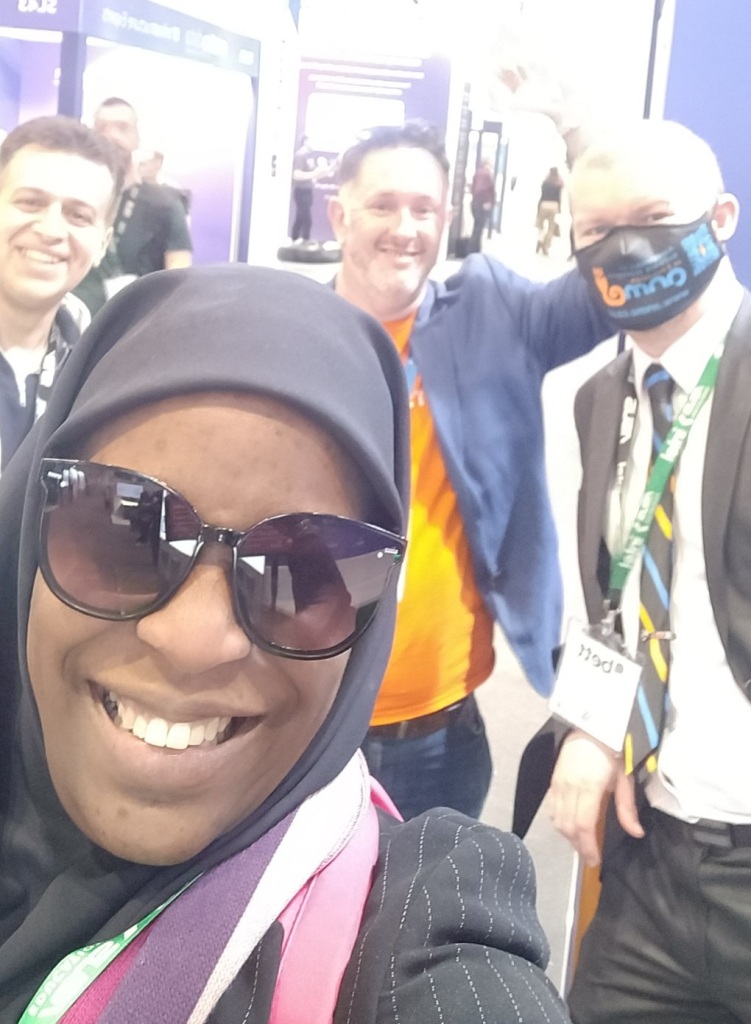
It was while on the stand that Bukky stopped by for a chat. I always come away from chats with Bukky feeling positive and upbeat and this time was no different. We discussed a number of different areas including assessment and how there is a need to explore how technology can be better used to change the examinations and assessment systems which currently still rely on paper based exams. Mark Anderson also popped by, and I was introduced to Esam from Microsoft leading to a nice group selfie. I note on reflection, I may have briefly met Esam at a Microsoft FE event some years back however at the time and in the busy day and number of people met, I didn’t associate the face or name. And this is a problem I often have at Bett, recognising who I have or havent met in the past, including those I have only met via social media; It is however great when Bett provides you an opportunity to meet someone you have previously only corresponded with online.
During day 2 I also had the opportunity to meet up with an ex-colleague who is now working for a college. He was at the event with a new apprentice, so it was nice to see them both exploring Bett and was a good opportunity to introduce them to the ANME, which I am not sure FE colleges are as aware of as schools.
Before I knew it, it was time to jump on the train and head home.
Bett 2022
I suspect on reflection that 2 days at Bett is likely to be about the most I could reasonably allocate to the show. I will admit there were a few people I had wanted to meet, who due to time, etc I didn’t manage to catch up with, plus there were a few presentations I missed which may have been good to attend. That said, I think this year, although the need for planning your time at Bett was clear, I also realised the importance of allowing some time to support those unintended catchups and meetings which could never be planned.
For me, sadly not feeling so great towards the end of the first day, and into the second day impacted on what I was able to achieve; Sadly there is little I could have done about this. It had been a busy couple of weeks leading up to Bett and I think this simply caught up with me.
Again, looking back, the key benefit of Bett is the networking opportunities. During the two days I caught up with a variety of other educational professionals in different roles and in different educational contexts, and was able to chat and discuss the opportunities and challenges, including how technology is being, or could be used. Without Bett, and similar other shows, these opportunities wouldn’t exist. It was at this point I also thought about the ANME trail, which sees visitors to the show encouraged to visit a set of stands to try and win prizes; I love the way this encourages visitors to follow a path around the venue, and in doing so hopefully encourages opportunities for networking and discussion.
I didn’t manage to attend as many presentations as I intended during the two days, however I think this is partly due to some incidental meetings, which resulted in me not going to some of the presentations I planned to go to. On reflection, I think this was a fair exchange. The presentations I did manage to attend were all useful and informative, so it is definitely worth reviewing the programme of events ahead of Bett and planning which sessions to see, even if you don’t eventually get to them.
Conclusion
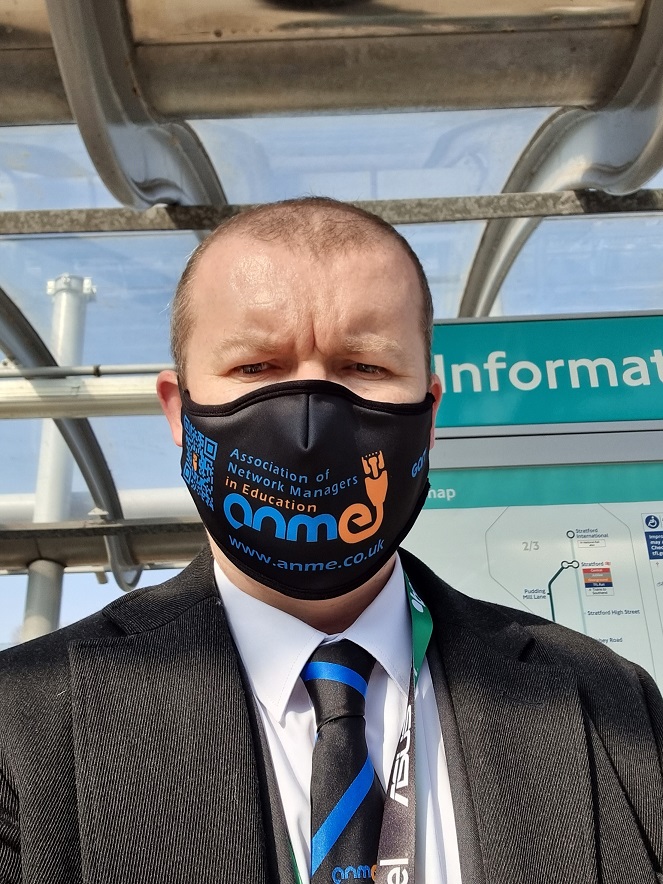
Bett continues to be a big event in the UK EdTech calendar. I am not sure I go for the stands anymore, instead going for the presentations and the mainly for the networking side of things. And the networking side of things never fails to deliver, especially following a 2 year absence from face to face meetings at Bett.
Looking forward to Bett 2023, I think I will be in attendance once again. I suspect one area I need to work on is planning to visit more of the stands, and particularly those stands which represent new start-ups and solutions, as opposed to the established brands and products.
Bett 2022 was another useful, memorable and fun event. Here’s looking forward to Bett 2023.


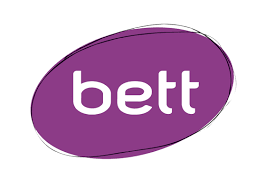
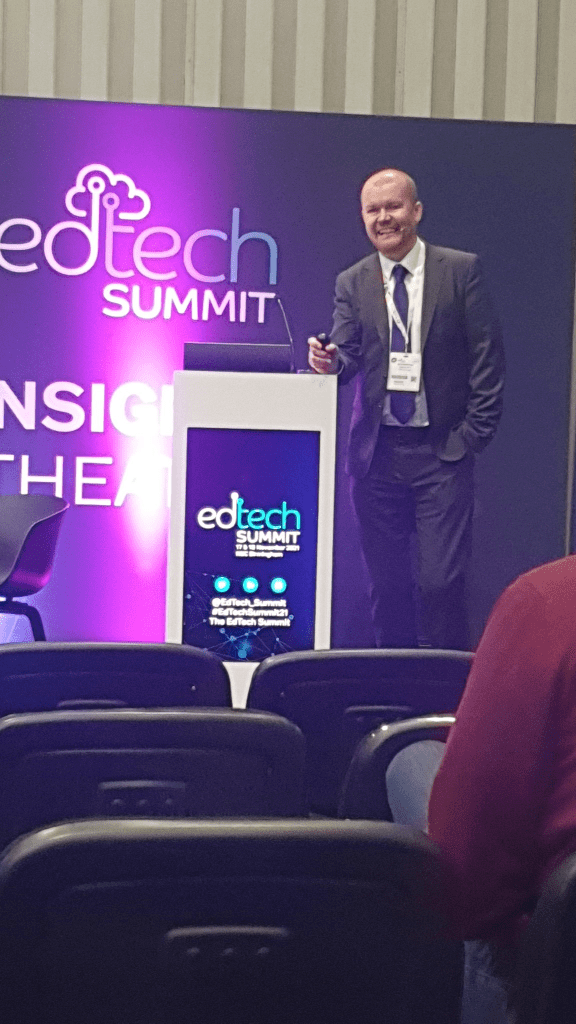
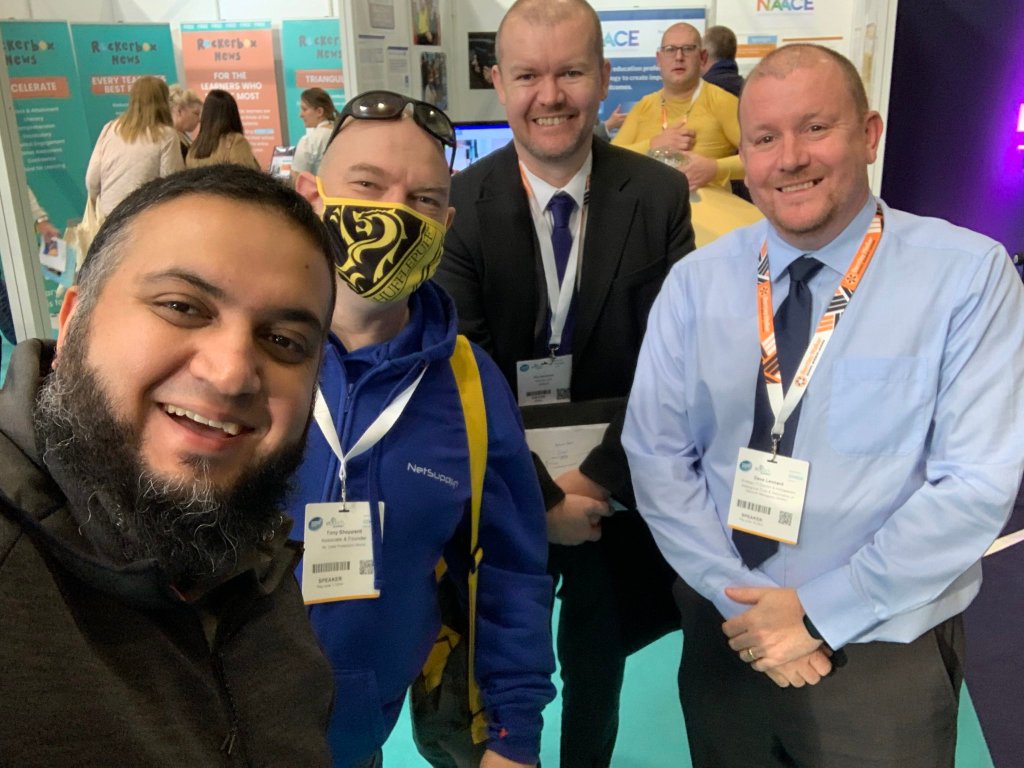
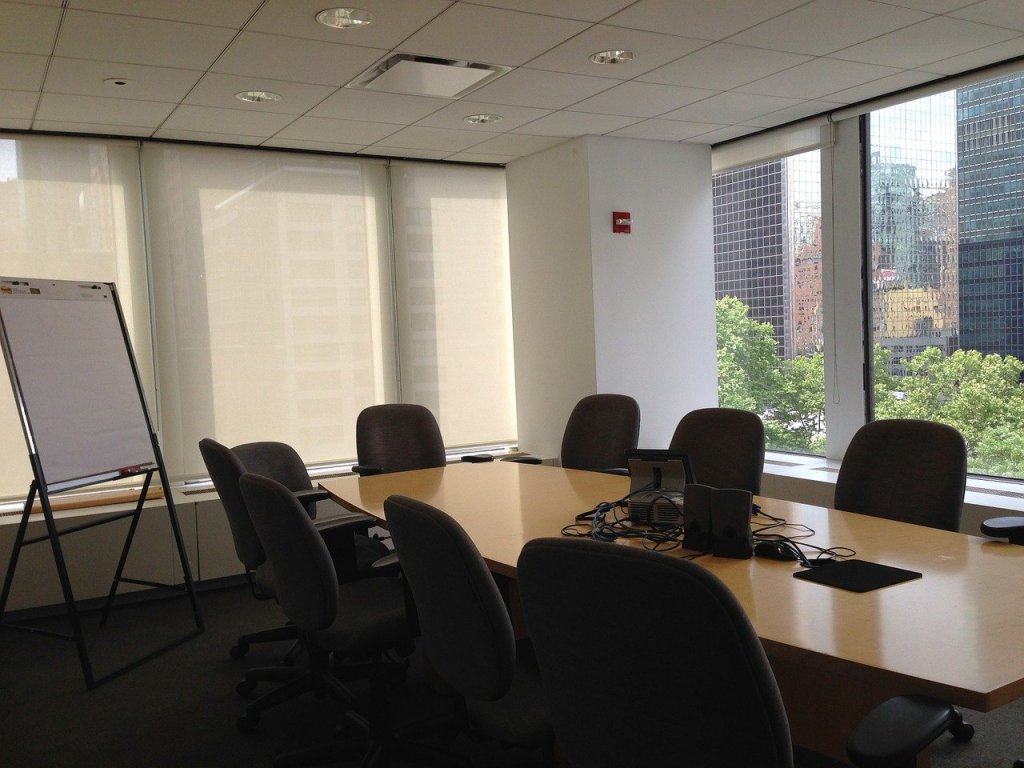
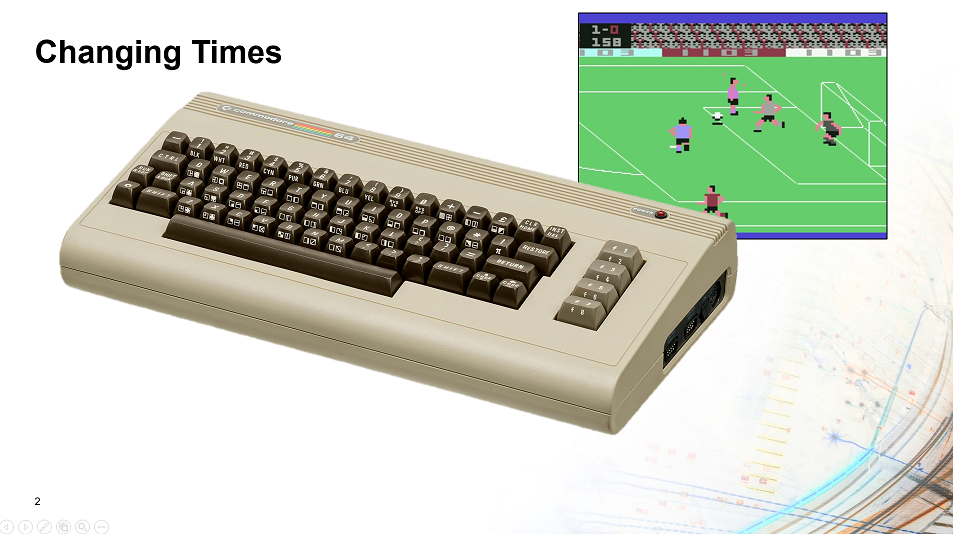 It is important to firstly acknowledge that our views on technology are very much the result of our experiences. My experiences include learning to code in Basic on the Commodore 64 at an early age, before moving on to AMOS basic on the Amiga and then QBasic, Visual Basic and C++ on the PC. This early use of technology, and the ability to develop software to solve problems has very much shaped my views. Now, today I walk around with a mobile phone with over a million times more memory than my commodore 64, from less than 30 years earlier, and the growth rate across the period has not been linear. A perfect illustration of this lies in how long it took various technologies to reach 50 million users. Radio took 75 years whereas TV only took 38 years. Bringing us close to today, Facebook got the time to 50 million users down to 3.5 years before Pokemon go managed it in less than a single month. It is clear from this that the pace of changing is quickening.
It is important to firstly acknowledge that our views on technology are very much the result of our experiences. My experiences include learning to code in Basic on the Commodore 64 at an early age, before moving on to AMOS basic on the Amiga and then QBasic, Visual Basic and C++ on the PC. This early use of technology, and the ability to develop software to solve problems has very much shaped my views. Now, today I walk around with a mobile phone with over a million times more memory than my commodore 64, from less than 30 years earlier, and the growth rate across the period has not been linear. A perfect illustration of this lies in how long it took various technologies to reach 50 million users. Radio took 75 years whereas TV only took 38 years. Bringing us close to today, Facebook got the time to 50 million users down to 3.5 years before Pokemon go managed it in less than a single month. It is clear from this that the pace of changing is quickening. The more I think about the pace of change and the way that technology is becoming an integral part of our everyday lives the more the movie Ready Player One comes to mind. In the movie Wade Watts makes use of virtual reality to live a double life, living as Percival in VR. As the film progresses it becomes clear that his two lives aren’t as separate as he would like and that events in virtual reality impact on real life and vice versa. For us, like Wade Watts, our lives in real life are inseparably linked to our digital lives. In fact, I believe that it no longer serves us to think of digital citizenship as the term implies that there is something else available, a non-digital citizenship, when in fact there is not. Possibly the discussion should not be of digital citizenship at all but simply citizenship. As Danah Boyd, in her book, Its Complicated said, although the apps might change our online connectedness, our need to share and the challenges around privacy are “here to stay”.
The more I think about the pace of change and the way that technology is becoming an integral part of our everyday lives the more the movie Ready Player One comes to mind. In the movie Wade Watts makes use of virtual reality to live a double life, living as Percival in VR. As the film progresses it becomes clear that his two lives aren’t as separate as he would like and that events in virtual reality impact on real life and vice versa. For us, like Wade Watts, our lives in real life are inseparably linked to our digital lives. In fact, I believe that it no longer serves us to think of digital citizenship as the term implies that there is something else available, a non-digital citizenship, when in fact there is not. Possibly the discussion should not be of digital citizenship at all but simply citizenship. As Danah Boyd, in her book, Its Complicated said, although the apps might change our online connectedness, our need to share and the challenges around privacy are “here to stay”.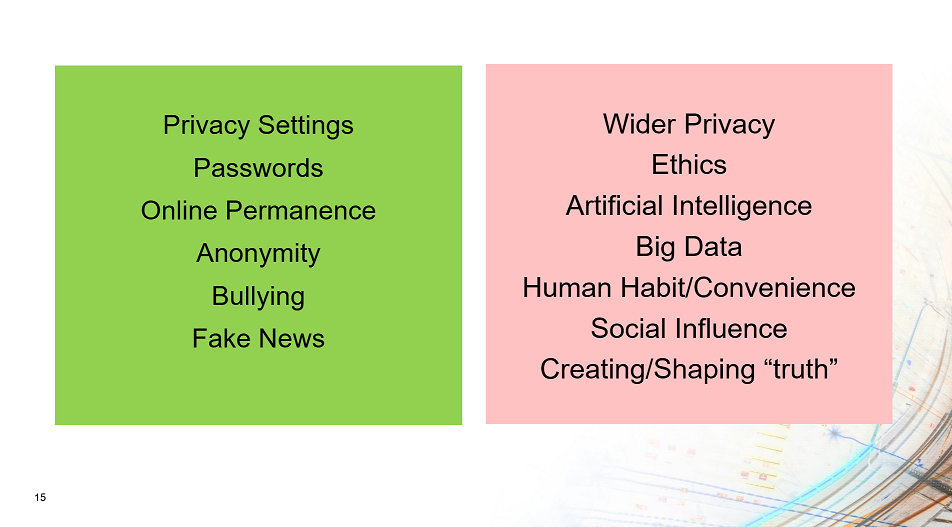 Looking at how we prepare our students for the world and the issues listed above I can see the things which we do satisfactorily, through our eSafety programmers, however I can also see those areas where little or nothing is currently offered. We currently discuss the importance of privacy settings on social media, of having strong passwords, of how online content, once posted, will remain permanent and of the need to be aware of bullying online. These areas are currently covered. Sadly, however little is said in relation to the conflict between user convenience and individual privacy, between individual privacy and public good, and between social media reporting on or actually creating the news and truths which we come to believe. These are the areas which we need to discuss, for which there isn’t a single answer and therefore where the most we can do is help students develop their own views through discussion. It is through discussion that we can hopefully ensure that students, when presented with the infinite challenges of technology use, will approach them with their eyes wide open.
Looking at how we prepare our students for the world and the issues listed above I can see the things which we do satisfactorily, through our eSafety programmers, however I can also see those areas where little or nothing is currently offered. We currently discuss the importance of privacy settings on social media, of having strong passwords, of how online content, once posted, will remain permanent and of the need to be aware of bullying online. These areas are currently covered. Sadly, however little is said in relation to the conflict between user convenience and individual privacy, between individual privacy and public good, and between social media reporting on or actually creating the news and truths which we come to believe. These are the areas which we need to discuss, for which there isn’t a single answer and therefore where the most we can do is help students develop their own views through discussion. It is through discussion that we can hopefully ensure that students, when presented with the infinite challenges of technology use, will approach them with their eyes wide open.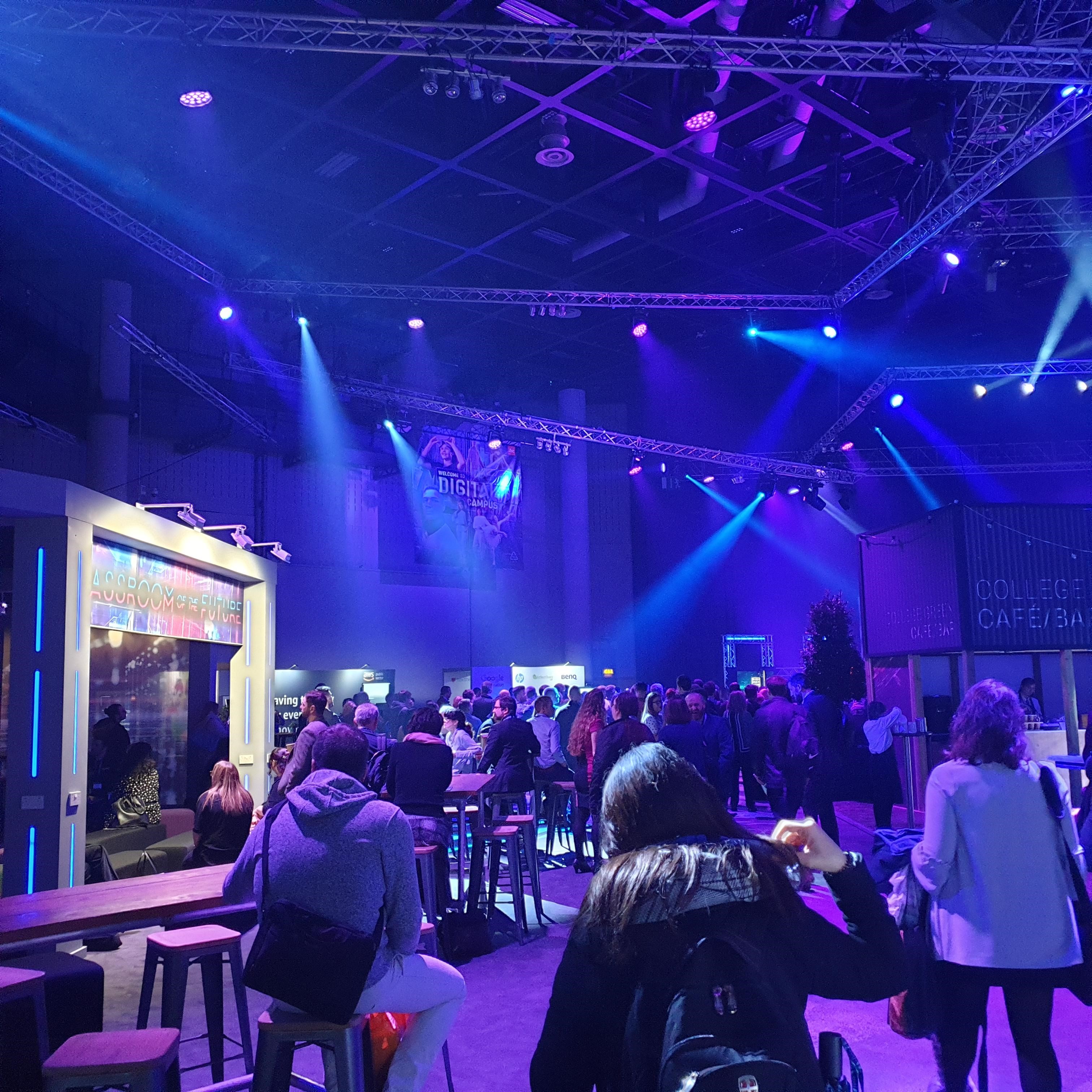 I thought I would share some initial thoughts following day one of JISC DigiFest. The event was launched with a very polished and professional pre-prepared video displayed on screens scattered around the events main hall, focussing on the rate of change in relation to technology and some of the technological implications of technology on the world we live in. The launch session also included a room height “virtual” event guide introducing the sessions and pointing you in the direction of the appropriate hall. In terms of the launch of a conference this was the most polished and inspiring launch I have seen albeit on reflection there wasn’t much particularly innovative or technically complex about it.
I thought I would share some initial thoughts following day one of JISC DigiFest. The event was launched with a very polished and professional pre-prepared video displayed on screens scattered around the events main hall, focussing on the rate of change in relation to technology and some of the technological implications of technology on the world we live in. The launch session also included a room height “virtual” event guide introducing the sessions and pointing you in the direction of the appropriate hall. In terms of the launch of a conference this was the most polished and inspiring launch I have seen albeit on reflection there wasn’t much particularly innovative or technically complex about it.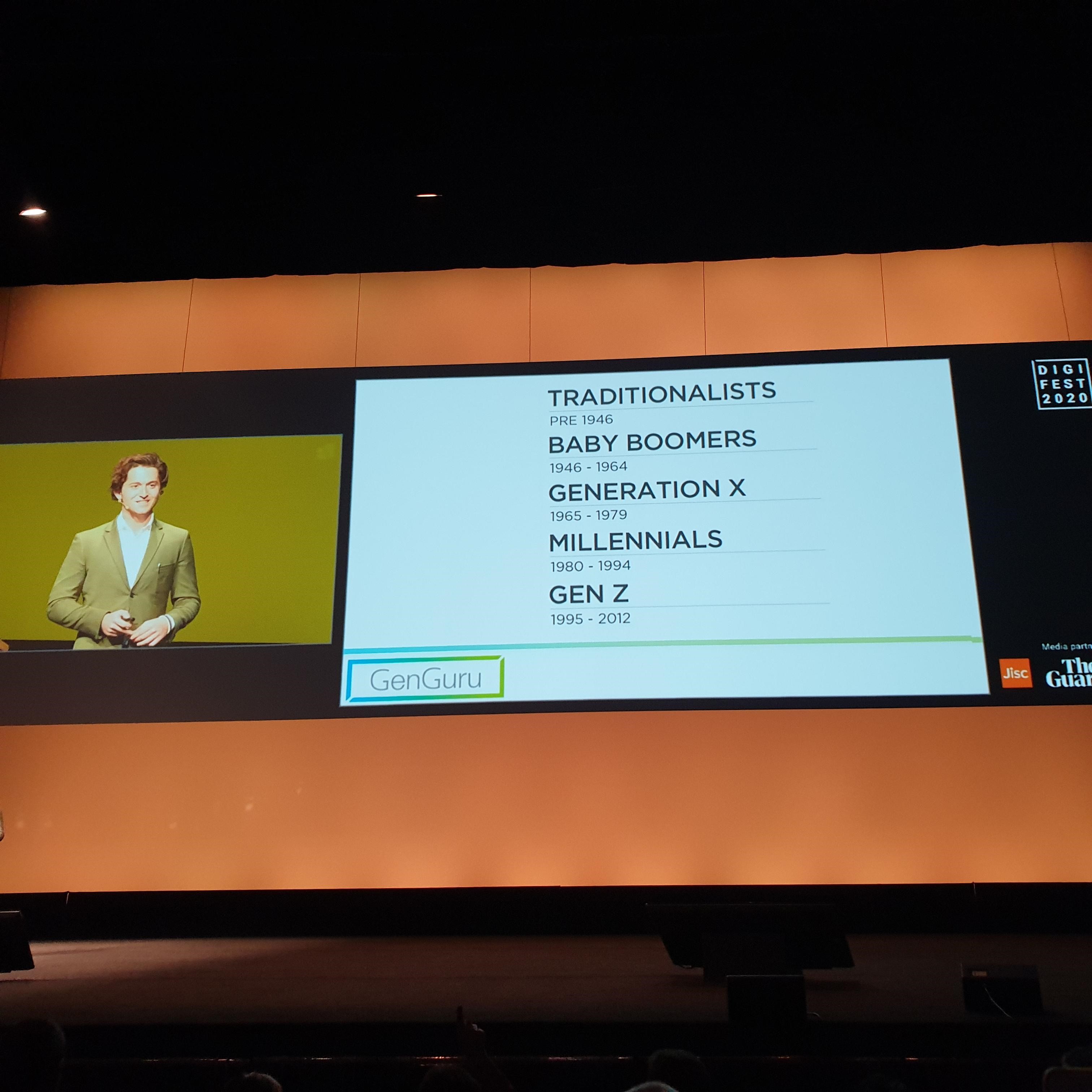 The keynote speaker addressed the changing viewpoints of different generations of people focussing particularly on Generation Z, the generation which currently are in our sixth forms, colleges and universities. I took away two key points from the presentation. The first was how each generations views were shaped by their experiences particularly between the ages of 12 and 20 year old. Jonah Stillman used thoughts on space as an example showing how Generation X might have positive views focussing on the successes of the moon landing whereas Millennials may have a more cynical view following the Challenger disaster. Additionally, Jonah mentioned movies as a social influencer and how those in the Harry Potter generation may view cooperation and trying hard, even where unsuccessful, in a positive manner. Those born later than this may draw on another series of films, in the hunger games, resulting in a greater tendency towards competition and the need to succeed in line with the movies storyline of everyone for themselves and failure results in death. The second take away point from the session resulted from the questioning at the end of the session around what some saw as the absoluteness of the boundaries between generations. I think Jonah’s use of the word “tendency” addressed this concern in that the purpose of the labels was for simplicity and to indicate a general trend and tendency rather than to suggest that all people born on certain dates exhibited a certain trait. It increasing concerns me that this argument keeps coming up when surely it is clear that there is a need to use simplistic models to help clarity of explanation and that no model, not matter how complex will ever truly capture the real complexity of the world we live in.
The keynote speaker addressed the changing viewpoints of different generations of people focussing particularly on Generation Z, the generation which currently are in our sixth forms, colleges and universities. I took away two key points from the presentation. The first was how each generations views were shaped by their experiences particularly between the ages of 12 and 20 year old. Jonah Stillman used thoughts on space as an example showing how Generation X might have positive views focussing on the successes of the moon landing whereas Millennials may have a more cynical view following the Challenger disaster. Additionally, Jonah mentioned movies as a social influencer and how those in the Harry Potter generation may view cooperation and trying hard, even where unsuccessful, in a positive manner. Those born later than this may draw on another series of films, in the hunger games, resulting in a greater tendency towards competition and the need to succeed in line with the movies storyline of everyone for themselves and failure results in death. The second take away point from the session resulted from the questioning at the end of the session around what some saw as the absoluteness of the boundaries between generations. I think Jonah’s use of the word “tendency” addressed this concern in that the purpose of the labels was for simplicity and to indicate a general trend and tendency rather than to suggest that all people born on certain dates exhibited a certain trait. It increasing concerns me that this argument keeps coming up when surely it is clear that there is a need to use simplistic models to help clarity of explanation and that no model, not matter how complex will ever truly capture the real complexity of the world we live in.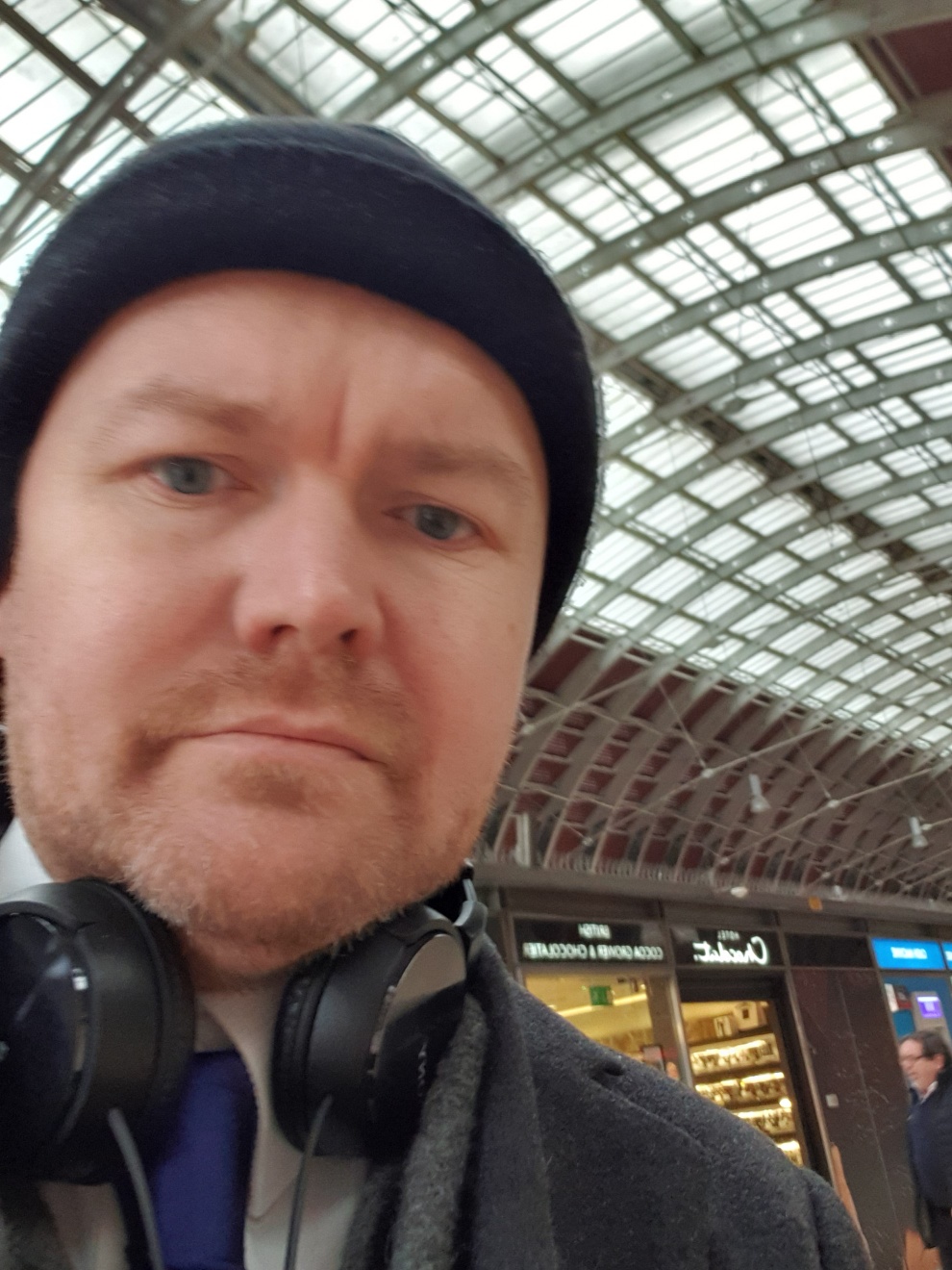 Another year another BETT and guess what? Once again, I failed to learn from experience and decided to make my way down via train and once again it went wrong. This time it was simply my first train being late leading to me missing my connecting train. This had the same concertina impact as I experienced last year leading to me rushing around. Maybe next year I will learn? Third time lucky?
Another year another BETT and guess what? Once again, I failed to learn from experience and decided to make my way down via train and once again it went wrong. This time it was simply my first train being late leading to me missing my connecting train. This had the same concertina impact as I experienced last year leading to me rushing around. Maybe next year I will learn? Third time lucky?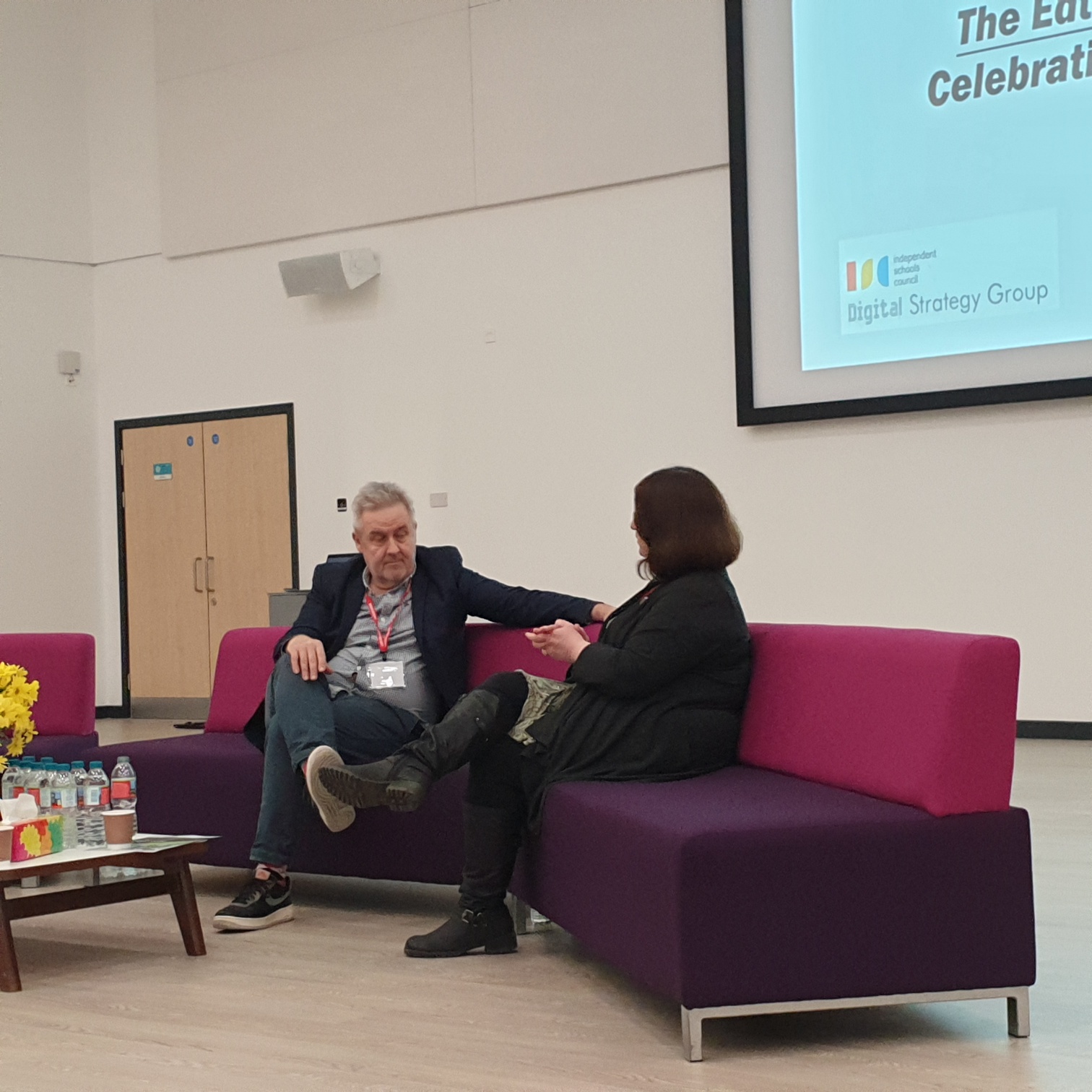 In terms of the other speakers, who presented in a more professional and polished manner than myself, I found Emma Darcy and her discussion with Ty very interesting discussing. I particularly liked her mention of preparing students for “jobs of the future” which fits with my views in the needs to do more in relation to digital citizenship.
In terms of the other speakers, who presented in a more professional and polished manner than myself, I found Emma Darcy and her discussion with Ty very interesting discussing. I particularly liked her mention of preparing students for “jobs of the future” which fits with my views in the needs to do more in relation to digital citizenship.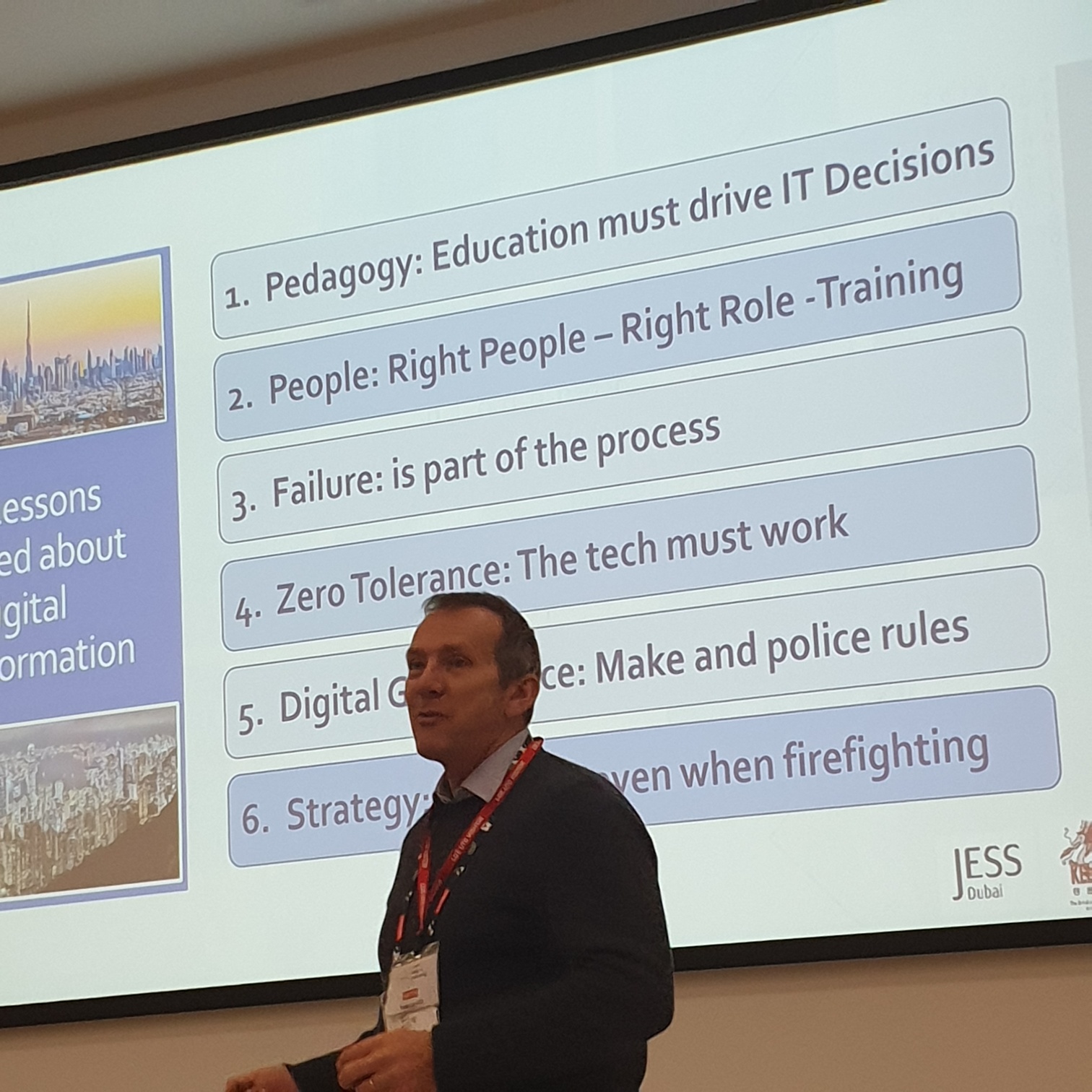 Also, another highlight was Mark Steed. Now I have heard mark speak on a number of occasions, but his 6 lessons were particularly interesting. Like Laura Knight he mentioned the need to focus on people, adding to this regarding a focus on training. He also highlighted that although his strategy appears to have been very successful it wasn’t without errors. I think this is an important message in that in reviewing others strategies and approaches it almost always looks like a straight line; they were here then did X and Y and got to there. The reality thought is that there would likely have been lots of wrong turns, mistakes, problems so its more like they did A, B, C, D, E and A and B didn’t work, C had to be adjusted and became F, and eventually they got to X and Y and success. I think this is what I was trying to get across with my journey idiom however I don’t think I was successful in this.
Also, another highlight was Mark Steed. Now I have heard mark speak on a number of occasions, but his 6 lessons were particularly interesting. Like Laura Knight he mentioned the need to focus on people, adding to this regarding a focus on training. He also highlighted that although his strategy appears to have been very successful it wasn’t without errors. I think this is an important message in that in reviewing others strategies and approaches it almost always looks like a straight line; they were here then did X and Y and got to there. The reality thought is that there would likely have been lots of wrong turns, mistakes, problems so its more like they did A, B, C, D, E and A and B didn’t work, C had to be adjusted and became F, and eventually they got to X and Y and success. I think this is what I was trying to get across with my journey idiom however I don’t think I was successful in this. As to BETT, after all my rushing around I only ended up with a couple of hours in BETT so can only offer a rather superficial view. Sadly, this view is that the event generally seemed very much the same as it has in every year I have attended since returning to the UK. If you had a specific stand or vendor to see, then it would be useful but if you are seeking to browse or to find innovative ideas then I think you would have been disappointed. This at least was my initial view on reflecting having returned home. A few days have passed this then I have reflected a bit more and I can see how BETT can be seen as very worthwhile now. It isn’t in the EdTech conference which the event is, or in the stands of technology vendors. The strength in BETT lies in the fact the event draws educators and EdTech leaders from across the country and across the world together for 4 days and in the networking this brings. On hindsight, even in my brief visit, I ended up at one stand where I had conversations with a number of EdTech leaders and as a result came away with plans to connect further and explore ideas and also issues and problems. But from this comes a question: Can we stimulate the same networking opportunities without the massive cost to vendors to be present at an event like BETT? A cost they ultimately pass on to their customers; schools.
As to BETT, after all my rushing around I only ended up with a couple of hours in BETT so can only offer a rather superficial view. Sadly, this view is that the event generally seemed very much the same as it has in every year I have attended since returning to the UK. If you had a specific stand or vendor to see, then it would be useful but if you are seeking to browse or to find innovative ideas then I think you would have been disappointed. This at least was my initial view on reflecting having returned home. A few days have passed this then I have reflected a bit more and I can see how BETT can be seen as very worthwhile now. It isn’t in the EdTech conference which the event is, or in the stands of technology vendors. The strength in BETT lies in the fact the event draws educators and EdTech leaders from across the country and across the world together for 4 days and in the networking this brings. On hindsight, even in my brief visit, I ended up at one stand where I had conversations with a number of EdTech leaders and as a result came away with plans to connect further and explore ideas and also issues and problems. But from this comes a question: Can we stimulate the same networking opportunities without the massive cost to vendors to be present at an event like BETT? A cost they ultimately pass on to their customers; schools.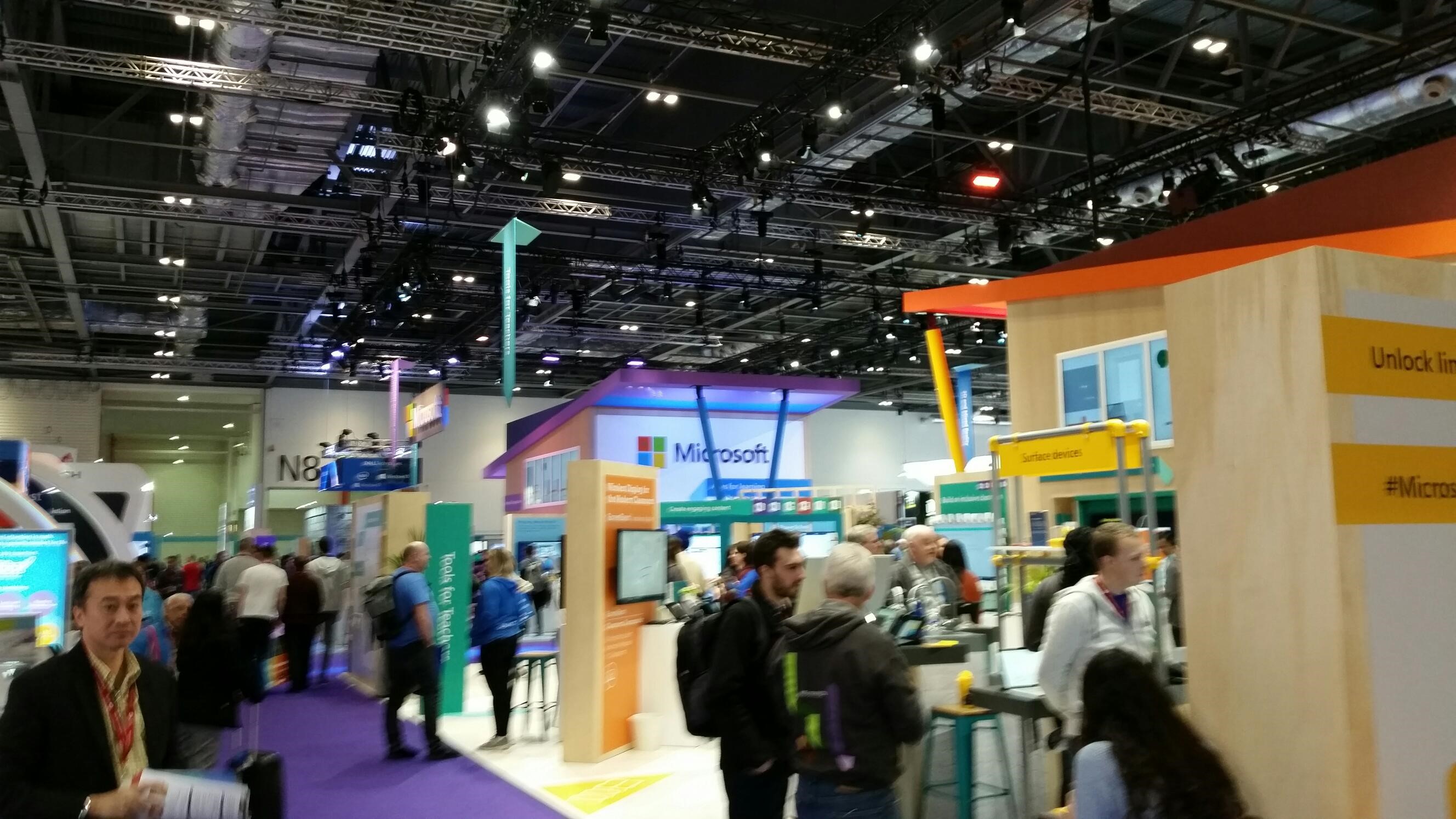 Its BETT this week! Will be popping down to have a brief look on Thursday and also to speak at the EdTech UK Conversations event also on Thursday. Given the shortness of my visit to BETT I am unlikely to be able to make the most of the various talks and presentations which will be going on. Sadly, there is little I am able to do about this although I will be planning for a more significant visit to BETT next year assuming my brief visit turns out to be worthwhile.
Its BETT this week! Will be popping down to have a brief look on Thursday and also to speak at the EdTech UK Conversations event also on Thursday. Given the shortness of my visit to BETT I am unlikely to be able to make the most of the various talks and presentations which will be going on. Sadly, there is little I am able to do about this although I will be planning for a more significant visit to BETT next year assuming my brief visit turns out to be worthwhile.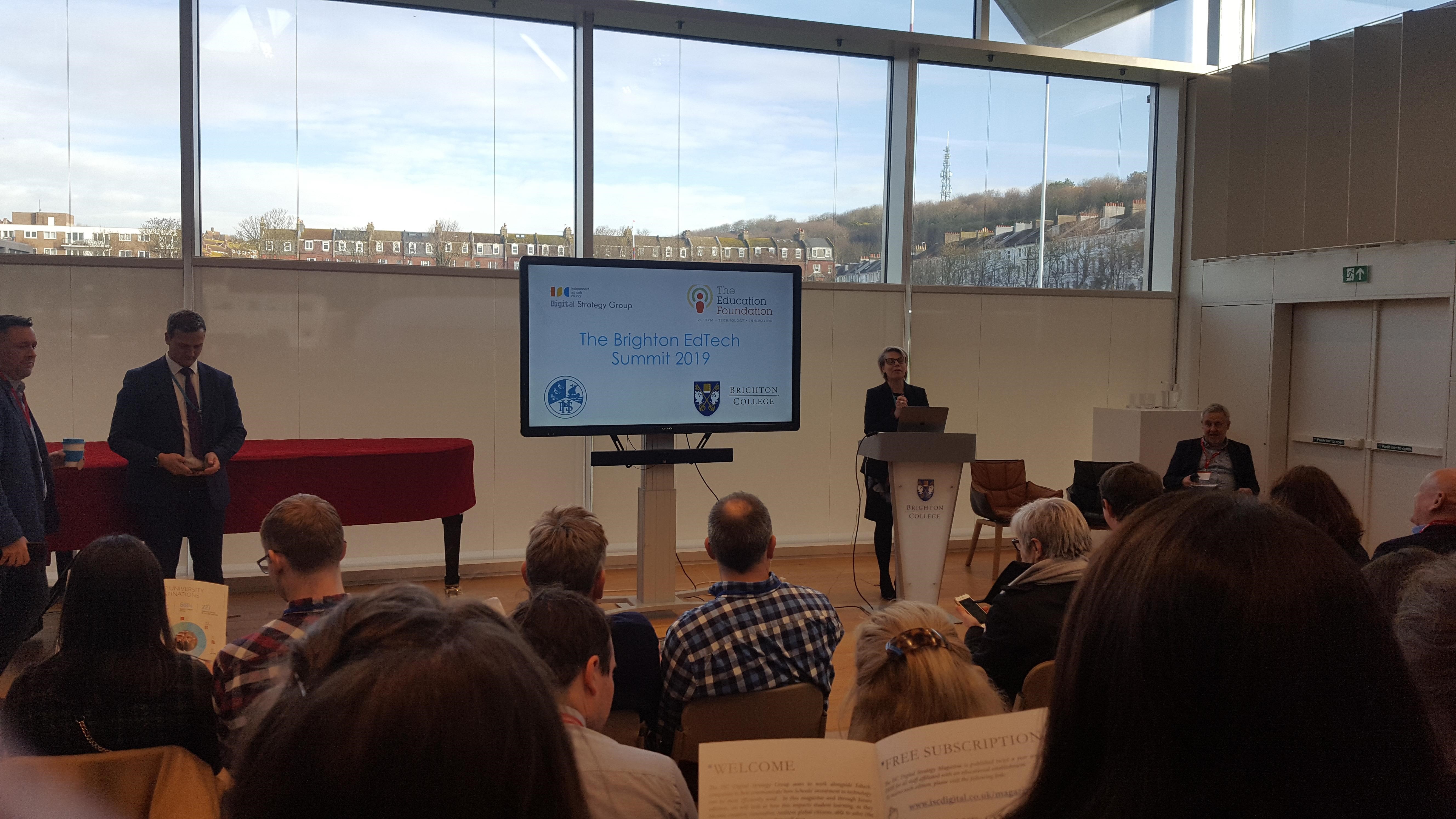 The need for sharing and collaborating across schools was the key message I took away from the Brighton ISC EdTech Summit last week. We need to share what works, the challenges, the successes, the approaches and the journeys taken. It is only through this sharing we can be more consistent and effective in our use of EdTech.
The need for sharing and collaborating across schools was the key message I took away from the Brighton ISC EdTech Summit last week. We need to share what works, the challenges, the successes, the approaches and the journeys taken. It is only through this sharing we can be more consistent and effective in our use of EdTech.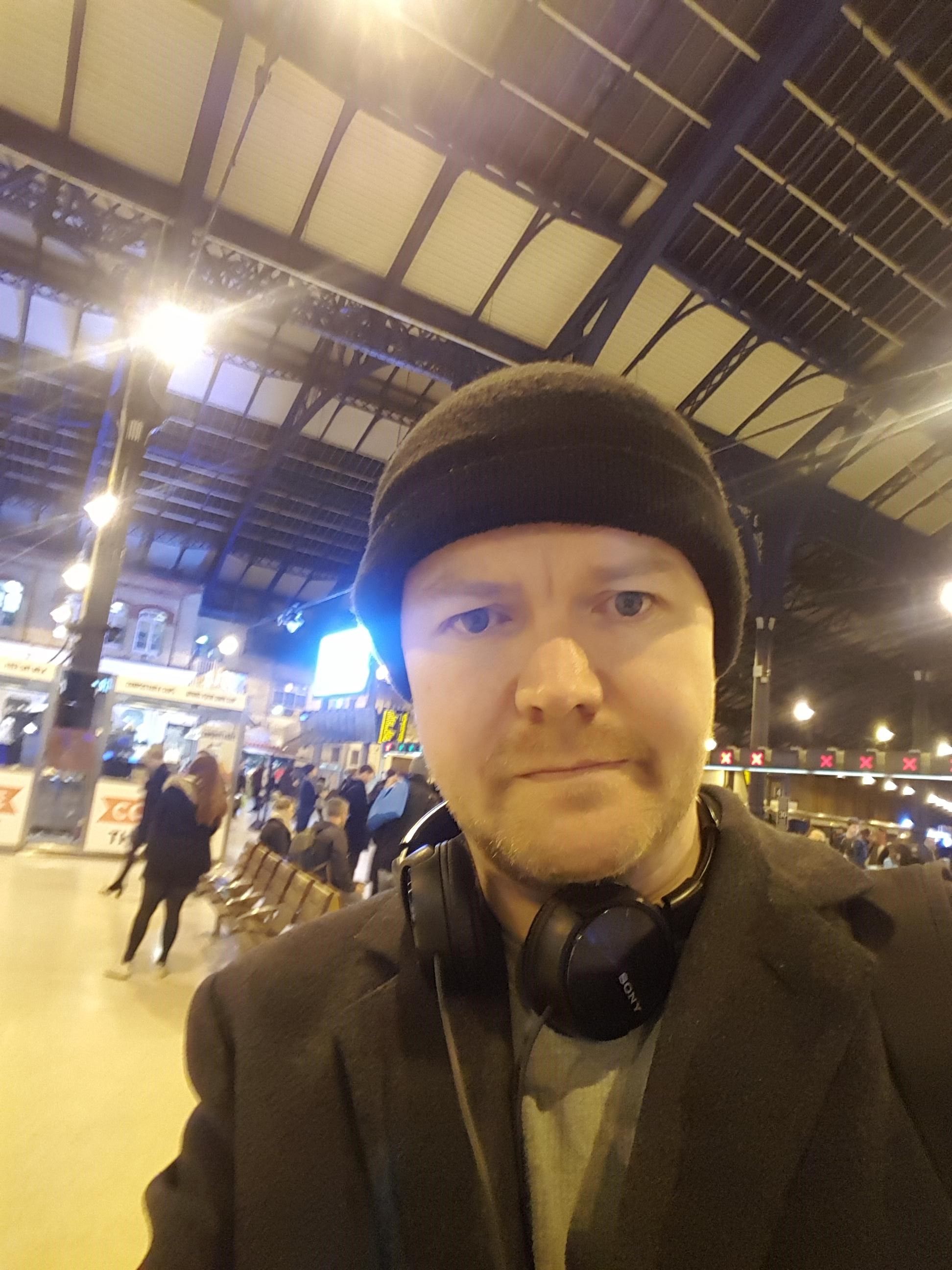 Now before I go any further I need to get the journey off my chest. A 3 train journey on the way to Brighton including a rush to the 2nd train following a delay on train number 1, followed by missing my planned homeward bound train, which would have been a 2 train journey, and therefore requiring a 4 train trip. Am not the best traveller on trains especially when no seat is available and the above pushed me to the limit of my patience. All this plus taxis, so total travel of 7 trains and 4 taxis. But enough of that, now I have it off my chest, the key thing was the conference itself.
Now before I go any further I need to get the journey off my chest. A 3 train journey on the way to Brighton including a rush to the 2nd train following a delay on train number 1, followed by missing my planned homeward bound train, which would have been a 2 train journey, and therefore requiring a 4 train trip. Am not the best traveller on trains especially when no seat is available and the above pushed me to the limit of my patience. All this plus taxis, so total travel of 7 trains and 4 taxis. But enough of that, now I have it off my chest, the key thing was the conference itself.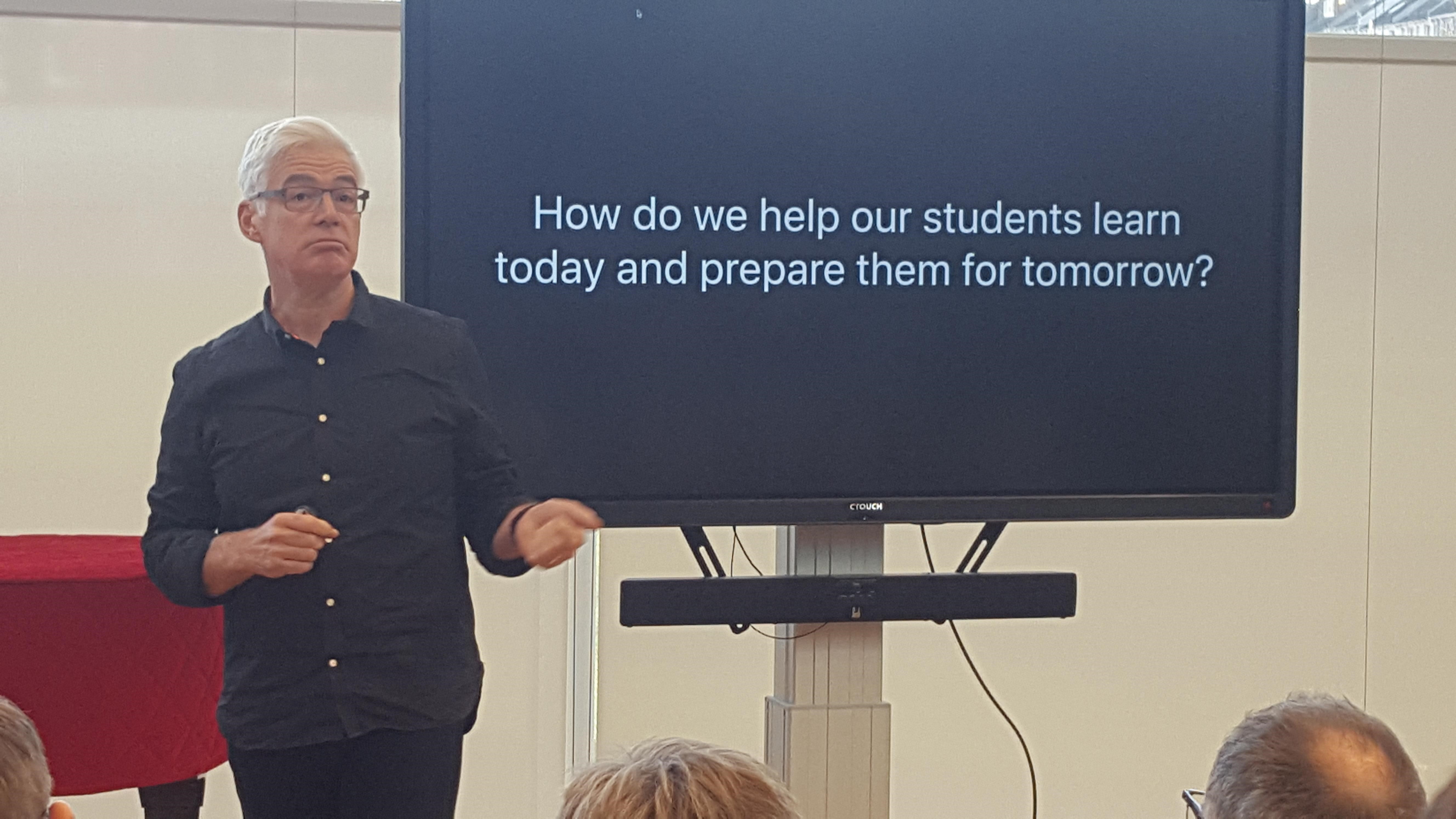 Richard Teversham from Apple was next up highlighting the fact that we now live in a world where every job is a technology job. I particularly liked his explanation of how we were in the third age, a people age, and that it was people first, before technology. My own experience seems to agree with this. Technology is great but it needs someone to understand how it might be used and how it might benefit teaching and learning, then it needs someone to actually use it. It needs people and these people need to be motivated and interested in how the technology might enable learners, they also need to see the potential. In relation to potential Richard explained that “with technology great things can happen” and I tend to agree.
Richard Teversham from Apple was next up highlighting the fact that we now live in a world where every job is a technology job. I particularly liked his explanation of how we were in the third age, a people age, and that it was people first, before technology. My own experience seems to agree with this. Technology is great but it needs someone to understand how it might be used and how it might benefit teaching and learning, then it needs someone to actually use it. It needs people and these people need to be motivated and interested in how the technology might enable learners, they also need to see the potential. In relation to potential Richard explained that “with technology great things can happen” and I tend to agree.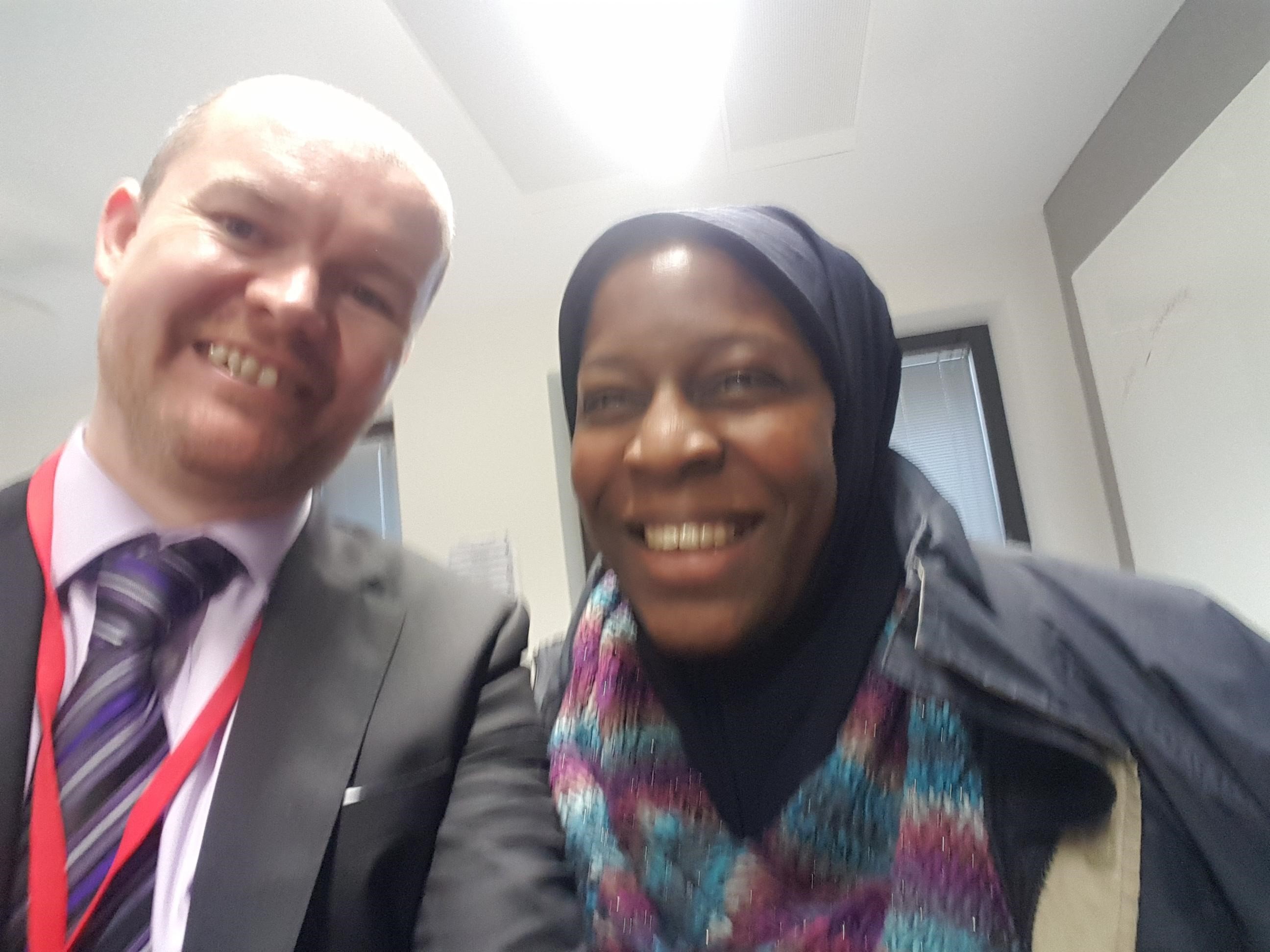
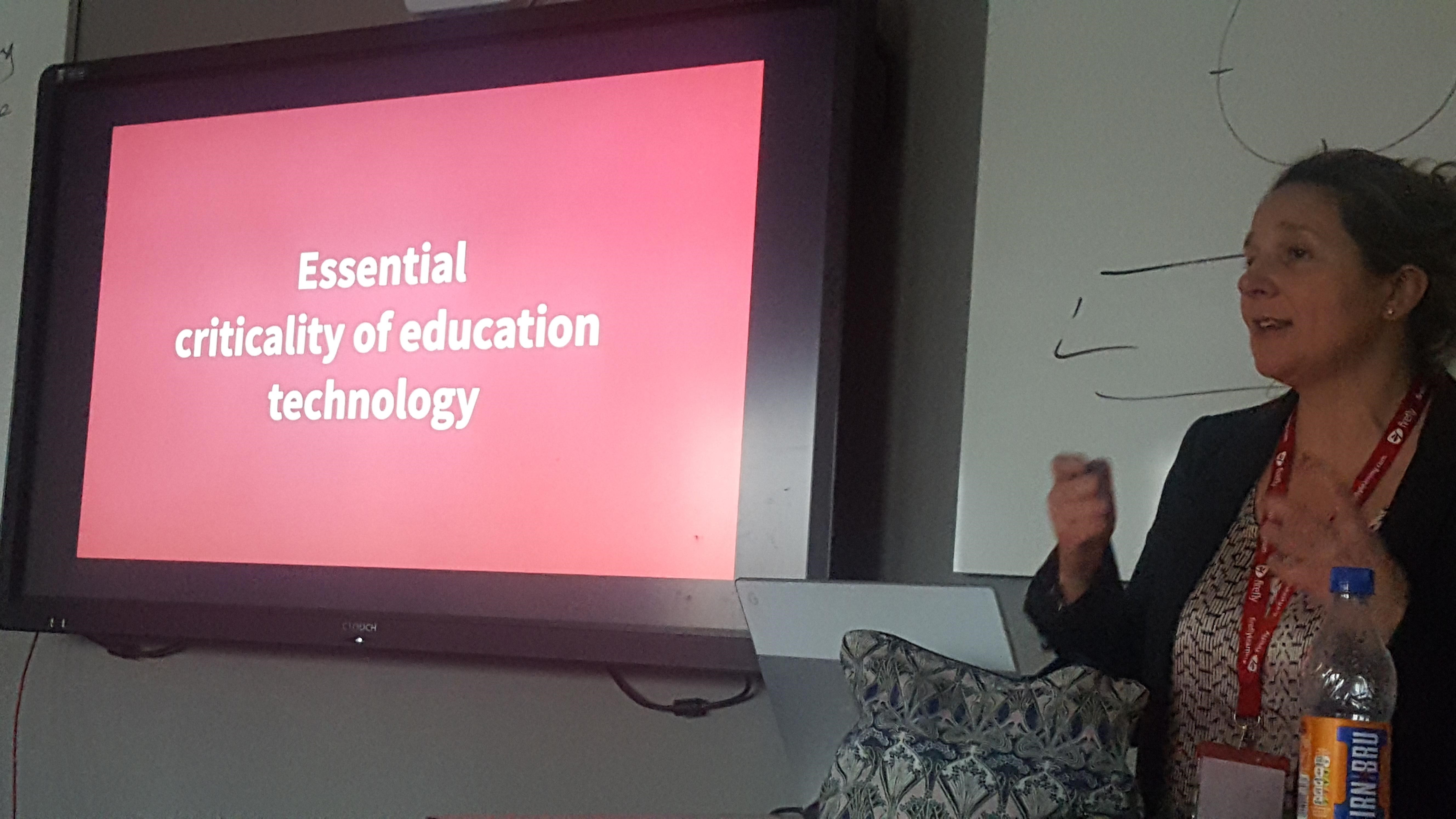 The conference also provided me the opportunity to present and I had the pleasure of presenting with Louise Jones, a fellow Scot. Her session was a bit of an eye opener particularly when she discussed “voice first” and raised the issue that traditional web searches return 1000’s of answers, but when you ask Alexa you will get only a single answer; As such what are the implications for our learners where they are likely to increasingly make use of voice first services? The existence of free web services was also raised and how we need to increasingly ask ourselves why a given service is free and how the service provider is themselves benefiting; few companies create a service, at their own cost, just for the good of society. I also liked her discussion of how version history and meta data, and the ability to replay the creation of documents by students might surface information in relation to the students thinking processes.
The conference also provided me the opportunity to present and I had the pleasure of presenting with Louise Jones, a fellow Scot. Her session was a bit of an eye opener particularly when she discussed “voice first” and raised the issue that traditional web searches return 1000’s of answers, but when you ask Alexa you will get only a single answer; As such what are the implications for our learners where they are likely to increasingly make use of voice first services? The existence of free web services was also raised and how we need to increasingly ask ourselves why a given service is free and how the service provider is themselves benefiting; few companies create a service, at their own cost, just for the good of society. I also liked her discussion of how version history and meta data, and the ability to replay the creation of documents by students might surface information in relation to the students thinking processes.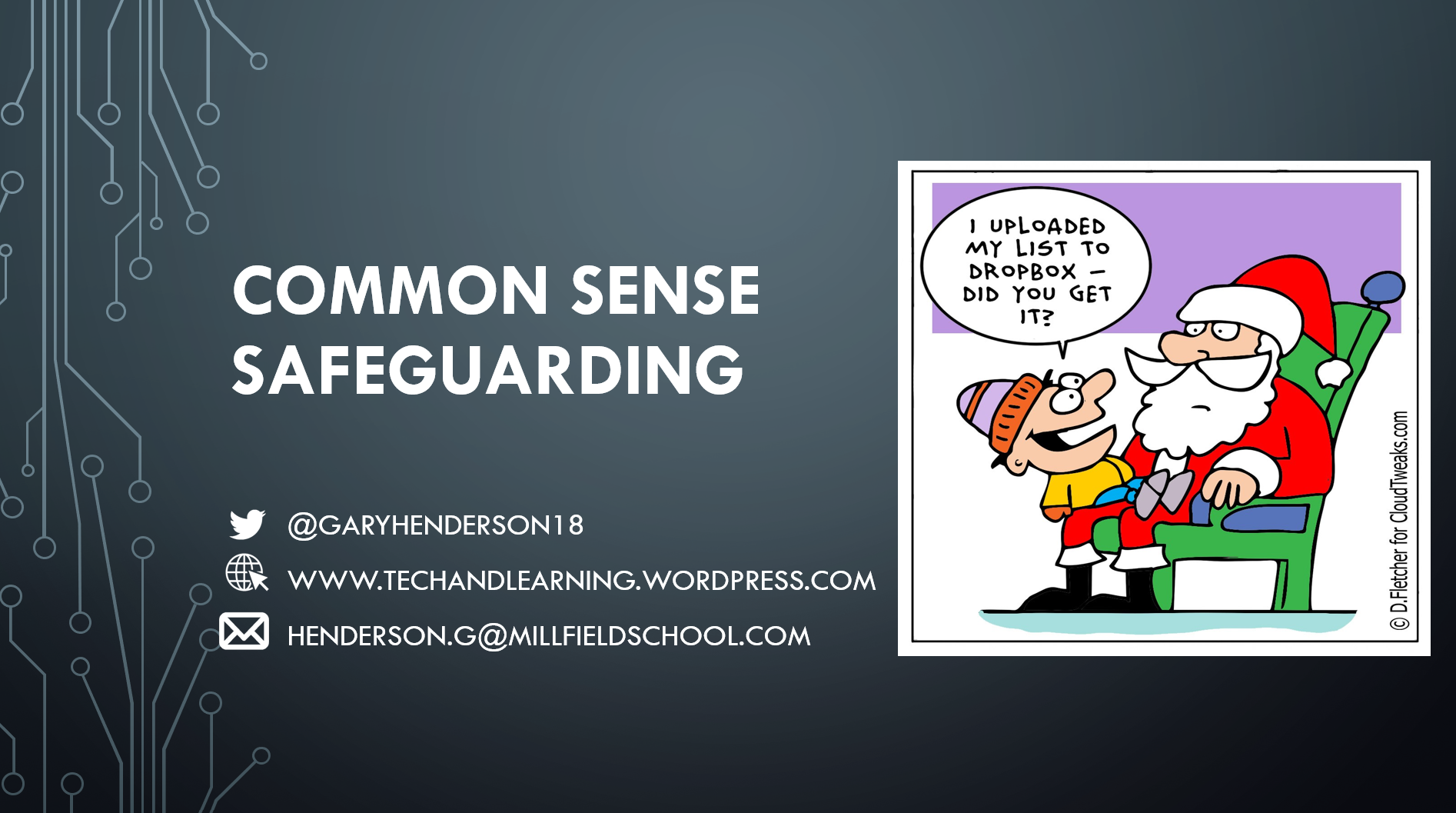 I had the opportunity to present at the Brighton ISC Digital EdTech summit during the week. My talk, “Common Sense Safeguarding” focussed on the need for schools to take a broad and more risk based view of online safety as opposed to the previous more compliance driven approach. Given the number and range of technologies students have access to and also the tools available to bypass protective measures put in place by a school, or even the ability to negate them totally through using 4G, online safety is no longer as simple as it once was. This therefore needs a broader view to be taken.
I had the opportunity to present at the Brighton ISC Digital EdTech summit during the week. My talk, “Common Sense Safeguarding” focussed on the need for schools to take a broad and more risk based view of online safety as opposed to the previous more compliance driven approach. Given the number and range of technologies students have access to and also the tools available to bypass protective measures put in place by a school, or even the ability to negate them totally through using 4G, online safety is no longer as simple as it once was. This therefore needs a broader view to be taken.